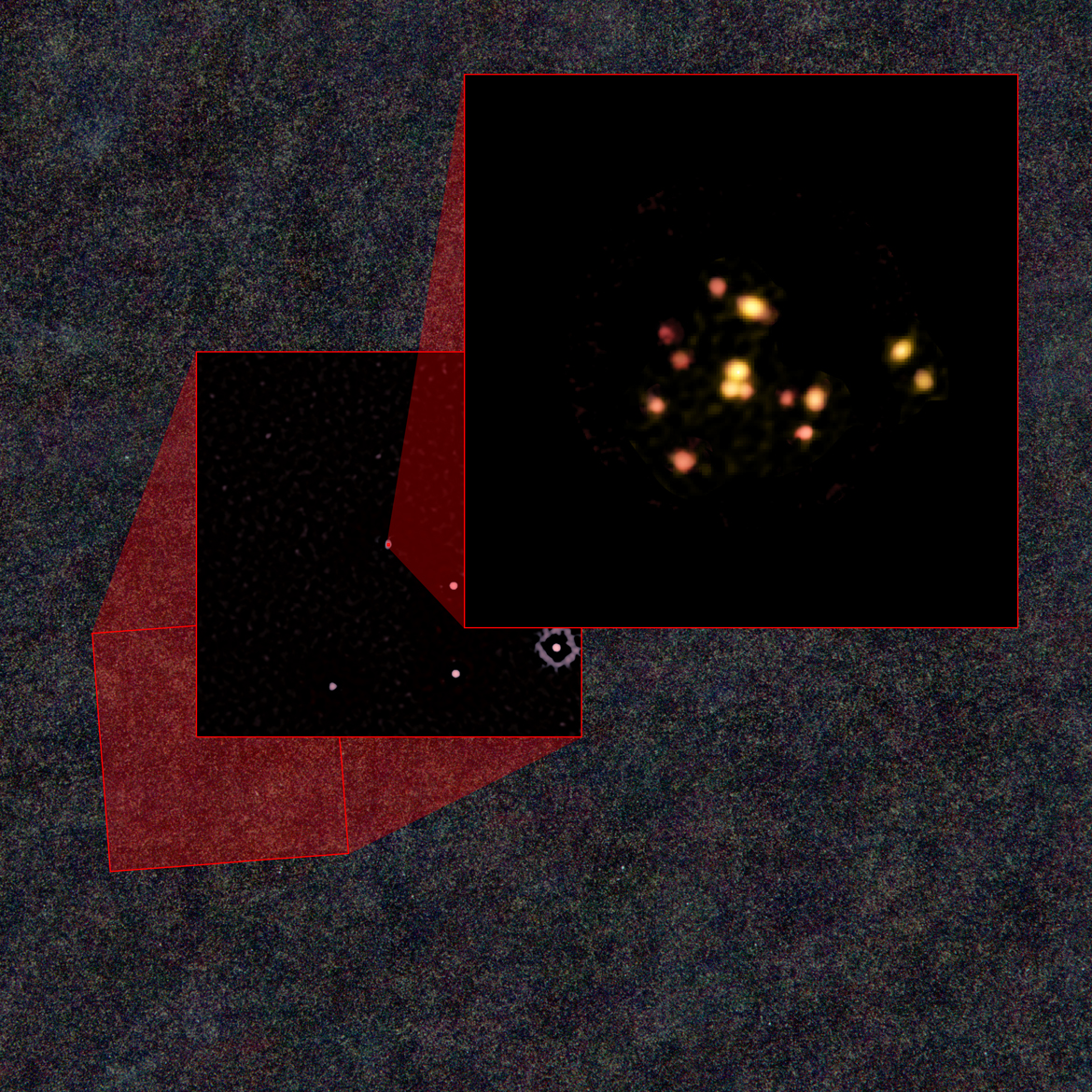Sub-mm galaxies
During my B.Sc and M.Sc degrees I worked with Scott Chapman on observational and theoretical studies of Sub-mm galaxies. These are dusty galaxies at z > 2 which posses star formation rates up to 1000 solar masses per year. They are some of the most extreme galaxies ever observed and allow us to study star formation in extreme environments in the early universe. I focused on using these galaxies to signpost early overdensities and proto-clusters in the early universe.
By identifying large collections of sub-mm galaxies we hope to study the larger structure of the universe. But sub-mm galaxies are rare and we don’t fully understand their formation mechanism, so their relatioship to other galaxies and matter in the universe turns out to be quite complicated! I studied this in numerical simulations for sub-mm galaxies at z=2 and observationally be searching for companions to known galaxies in ALMA data at z=6
One very exciting result we published in Nature where we discovered a galaxy cluster at redshift 4.3. This is one of the youngest and most convincing observations of a proto-cluster, which will likely form a massive galaxy cluster by the present day. Originally a bright smudge in observations from the South Pole Telescope, follow-up with the APEX and ALMA telescope revealed the source SPT2349-56 to contain no less then 14 galaxies. Through measurements of the CII and CO(4-3) emission lines we confirm all 14 galaxies reside at the same redshift and within 150 projected kpc of each other. You can read the manuscript here or read some awesome press articles from various sources: BBC, CBC or LA times
 |
|---|
| Showing the discovery of SPT2349-56 in SPT, LABOCA and ALMA images Credit: ALMA (ESO/NAOJ/NRAO), T. Miller & S. Chapman et al.; Herschel; South Pole Telescope; (NRAO/AUI/NSF) B. Saxton |